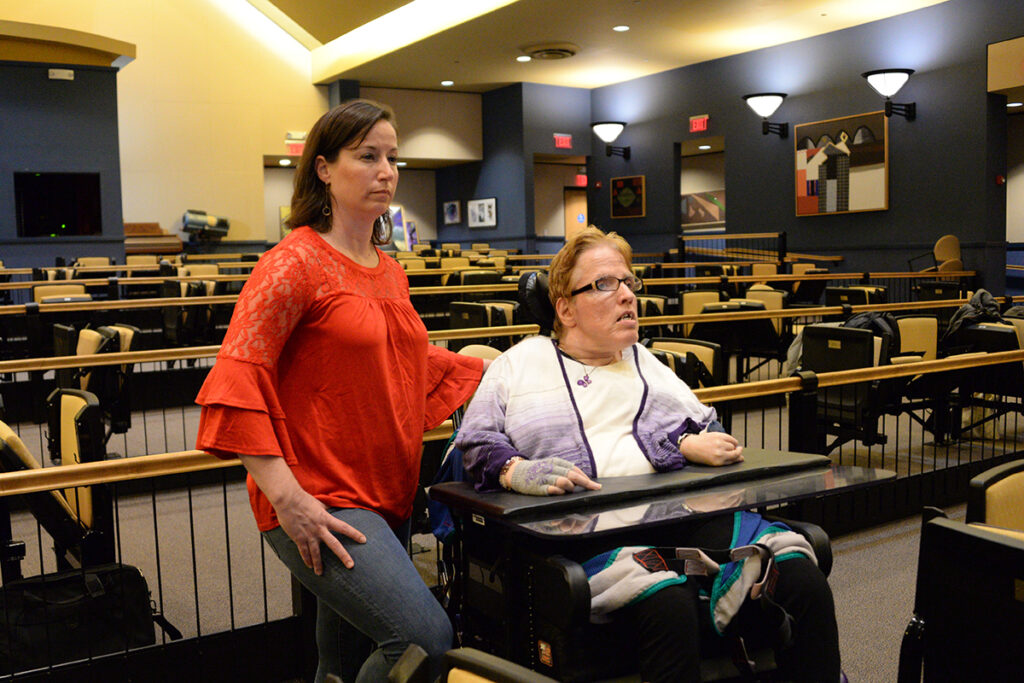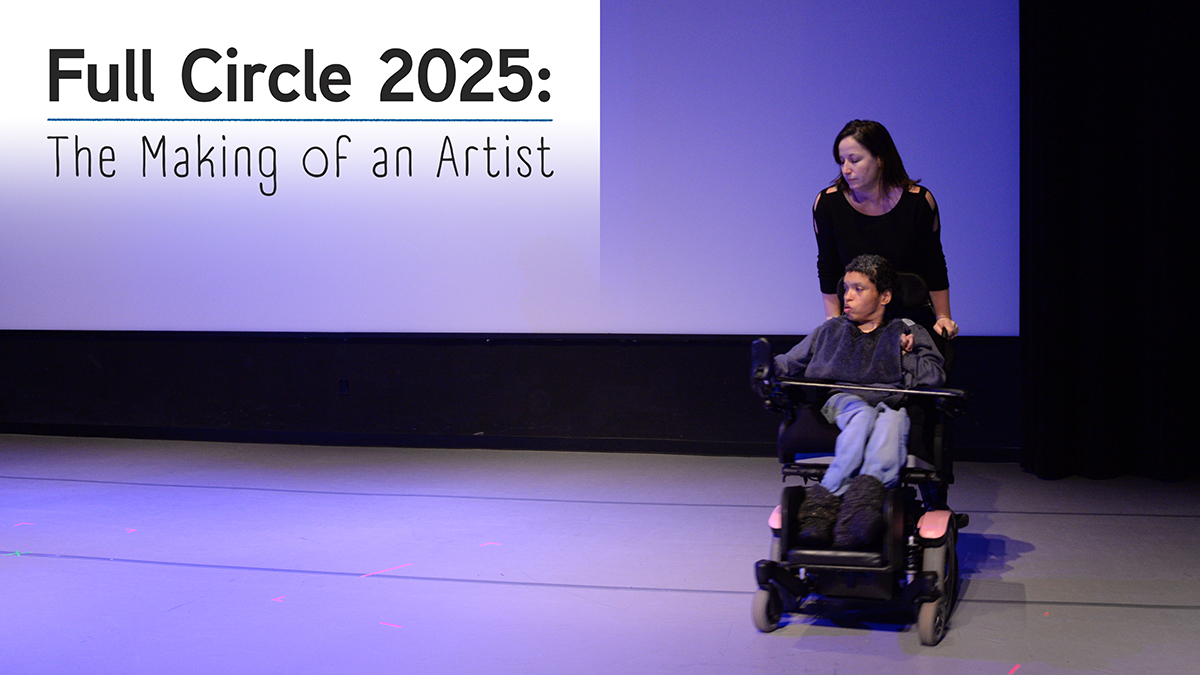Preparations for Full Circle 2025 are well underway, even though there’s a little less than two months before the event. It takes a lot of time and effort from the artists and staff at Arts Access to put on such a multifaceted show. In between busy schedules, we found some time to talk with Heather Williams, the Program Director at Arts Access, about what it takes to create the stage show.
What is your process for selecting pieces to feature in the stage show?
My Full Circle selection process considers creating a dynamic, well-rounded show by intentionally blending established performers with emerging talent while bringing fresh perspectives to our show. I prioritize musical diversity—from classical and gospel to contemporary artists, featuring solo acts and ensembles. Consideration for each piece includes its contribution to the evening’s overall flow, considering pacing, emotional range, and audience engagement to create a cohesive experience.
How did the theme “The Making of an Artist” guide your selections?
The theme “The Making of an Artist” allowed us to showcase the unique creative journeys and perspectives that define artistic growth, particularly highlighting how our artists with disabilities bring innovative approaches to choreography, theatrical performance, and written expression. Rather than focusing solely on polished final products, we selected pieces that illuminate each artist’s individual process and development, celebrating the distinctive viewpoints and creative methodologies that emerge from diverse experiences and abilities. This curatorial approach emphasized the evolution of artistic voice and technique, demonstrating that the path to artistry is as varied and compelling as the artists themselves, while showcasing how different perspectives enrich and expand the boundaries of traditional creative expression.
How long does it take to curate the stage show?
The curation process for the stage show spanned approximately four months, beginning in July when I started reviewing completed works from our artists. This extended timeline allowed for thorough consultation with both facilitators and the artists themselves to gather essential feedback on which pieces are performance-ready and best suited for the stage. The collaborative evaluation process ensures that selected works worked with the event’s theme but also represent each artist’s strongest and most developed material, while providing adequate time for any final adjustments needed to create a cohesive and impactful program.

What is the most challenging part of the process?
The most challenging aspect of curating the stage show is the difficult task of making selections when there is an abundance of fabulous work to choose from, making it nearly impossible to exclude anyone without feeling like we’re missing something valuable. With so many exceptional pieces that represent the diverse facets of the Arts Access Program—from creative writing to choreography and plays—the selection process becomes less about finding quality work and more about the heartbreaking reality of limited stage time and program constraints. Every piece excluded represents not just artistic merit, but also an artist’s journey and creative voice, making each curatorial decision a balance between celebrating individual achievement and creating a cohesive program that serves the broader mission of showcasing the remarkable talent within our community.
What is the most rewarding part of the process?
The most rewarding aspect of curating our stage show is witnessing the pure joy and pride on our artists’ faces when we inform them that their work has been selected for the program. This excitement continues to build as we watch their pieces come to life through the rehearsal process, seeing artists grow in confidence and skill as they prepare for performance. The culmination of this journey—watching these carefully nurtured works reach their full potential during the final performance—creates an incredibly fulfilling experience that validates not only the curation process but also celebrates each artist’s creative journey and the transformative power of inclusive artistic expression.
What do you hope the audience takes away from the show?
We hope our audience leaves with a profound understanding of the limitless abilities of artists with disabilities, recognizing that creativity knows no boundaries and that diverse perspectives enrich the entire artistic landscape. Beyond appreciation, we want to inspire audience members to explore and nurture their own creative sides, demonstrating that artistic expression is accessible to everyone regardless of background or ability. Most importantly, we hope to cultivate ongoing support for our Arts Access Program, encouraging the community to invest in ensuring its continued success so that we can keep providing these transformative opportunities for artists to develop, showcase their talents, and contribute their unique voices to our cultural fabric.

What is something new for the audience to expect from this year’s stage show?
This year’s stage show features a significant shift toward having more clients perform their own work directly, allowing audiences to witness the complete artistic journey from creator to performer. We’re placing greater emphasis on showcasing the entire creative process—from initial facilitation through final performance—giving audiences insight into how these remarkable pieces develop and evolve. Most importantly, we’re making a concerted effort to ensure the audience clearly understands that the beautiful, moving work they’re experiencing was created by talented artists with disabilities, celebrating both the artistry and the artists themselves in a way that highlights ability, creativity, and the power of inclusive artistic expression.
How are the Arts Access writers/dramatists involved in the making of the stage show?
Our writers and dramatists are integral to every aspect of bringing their work to the stage. Beyond simply writing their pieces, these artists actively participate in all production elements including selecting costumes, determining lighting design, staging their work, choosing props, and contributing to set design decisions. This comprehensive involvement ensures that the final performance authentically reflects their creative vision while providing them with invaluable hands-on experience in all facets of theatrical production, transforming them from writers into true theater makers who understand and control every element that brings their stories to life.
Anything else to add?
I hope that our guests leave the event inspired to create, moved to support Matheny and its Arts Access Program, and carry a new perspective on the incredible abilities of differently abled individuals. What guest will witness demonstrates that through Art Access’ creative support, the possibilities for artistic expression are truly endless. These artists have shown us that creativity transcends all boundaries, and their unique voices and perspectives enrich our entire community’s cultural landscape in ways we never imagined possible.
Join us on Saturday, November 8th for Full Circle 2025: The Making of an Artist, a multi-disciplinary fine arts showcase featuring original paintings, sculpture, choreography, dramatic scenes, and poetry created by the Arts Access artists. Tickets on sale now.

